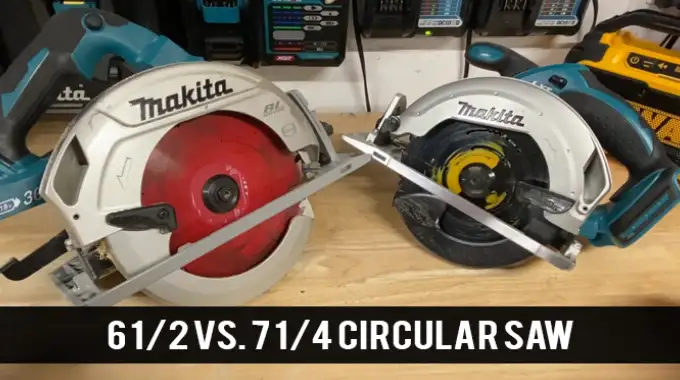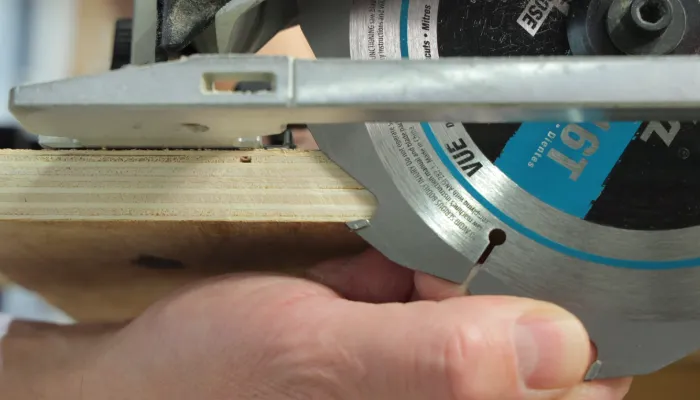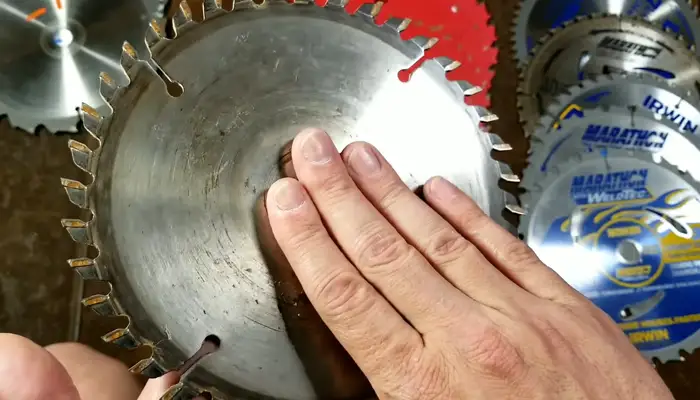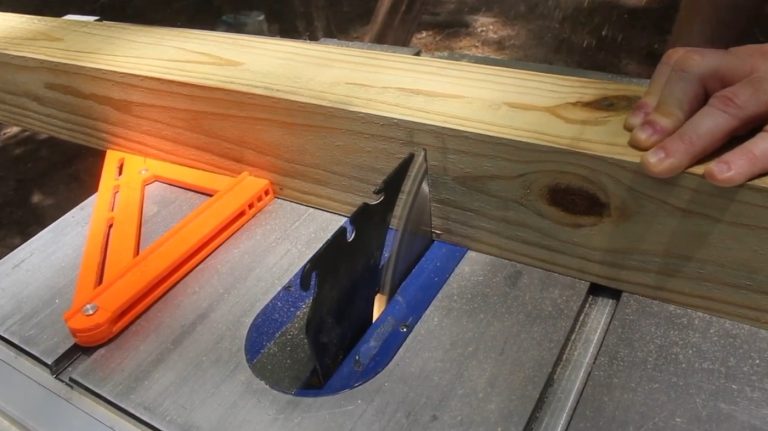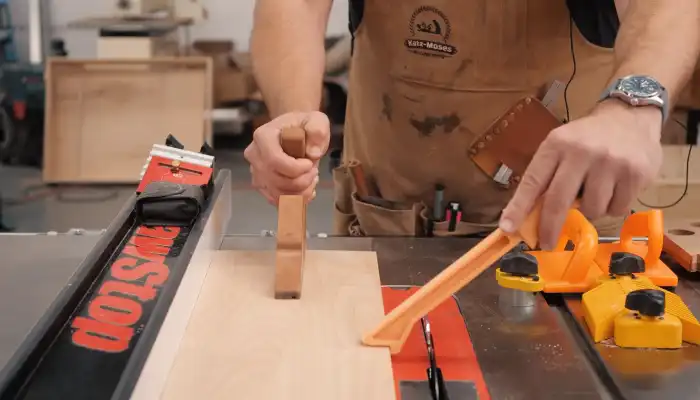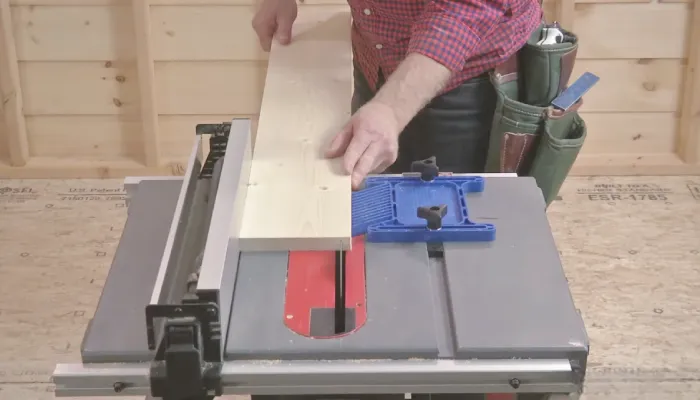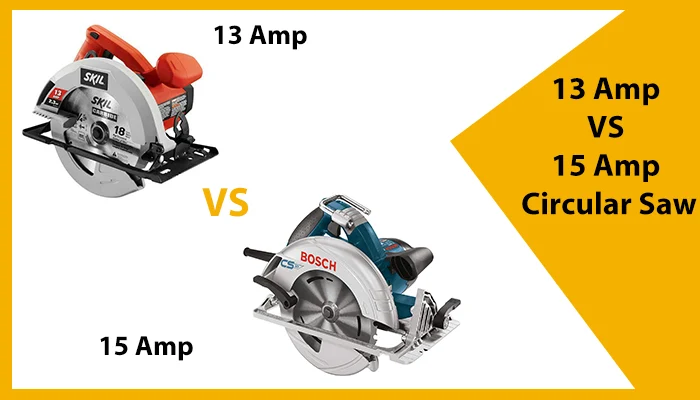6 1/2 vs 7 1/4 circular saw: 6 Differences
Circular saws are a necessary tool in every woodworker’s toolkit, but they are available in a wide variety of sizes and models. Two common circular saw size options are the 6 1/2 and 7 1/4 circular saw. While they may look similar at first glance, they differ in various aspects that I found in my research.
One difference between a 6 1/2-inch and 7 1/4-inch circular saw is the blade size and cutting capacity. I found that the 6 1/2-inch circular saw has a 6 1/2-inch blade with a 2.5-inch cutting depth.
Meanwhile, the 7 1/4 circular saw with a larger blade of 7 1/4 inches offers a cutting depth from 2.5 to 4 inches for more versatility.
I will explain all the distinctions between 6 1/2 and 7 1/4 circular saw sizes so you know what to pick.
- Powerful 5150 RPM Motor
- Lightweight Magnesium Construction
- 0-50 Degree Bevel Capacity
- Optimized Rubber Grip for Control
- 6-1/2-inch Carbide-Tipped Blade
- Powerful 15-Amp Motor, 5,300 RPM
- Single-Beam Laser for Accurate Cuts
- 51° Bevel with Positive Stops
- Integrated Dust Blower for Visibility
- Easy Blade Changes with Spindle Lock
6 Differences Between 6 1/2 and 7 1/4 Circular Saw
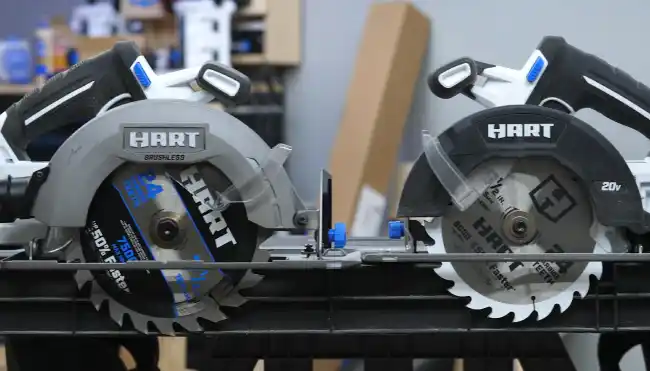
I found that the 6 12 and 7 14 circular saws offer unique features that cater to different cutting needs and preferences based on their different categories.
- Blade size and cutting capacity
- Weight and portability
- Power and performance
- Battery life and efficiency
- Cutting precision
- Cost considerations
Now, check out each of the key distinctions between 6 1/2 and 7 1/4 circular saws, providing insights into their distinct features and applications.
1. Blade Size and Cutting Capacity
There’s a difference in blade size and cutting capacity between a 6 1/2 and a 7 1/4 circular saw.
The 6 ½ circular saw is equipped with a blade that measures 6 ½ inches in diameter. This size is suitable for cutting wood and offers a cutting depth of up to 2.5 inches. It’s ideal for smaller tasks and projects.
On the other hand, the 7 ¼ circular saw features a larger blade measuring 7 ¼ inches in diameter. With this increased size, it excels in cutting through thicker materials and provides a cutting depth of up to 4 inches. This makes it more versatile and capable of handling a wider range of cutting applications.
2. Weight and Portability
Upon researching, I discovered that the 6 1/2 circular saw is known for its lightweight design, which makes it highly portable and easy to handle. This is particularly advantageous when moving around a job site or working in tight spaces.
In contrast, the 7 ¼ circular saw tends to be heavier, which can cause strain and fatigue during prolonged use. Carrying and maneuvering may not be as convenient, especially for extended periods.
Therefore, the 6 ½ inch circular saw is preferred if you prioritize portability and ease of use.
3. Power and Performance

The 6 ½ circular saw, while compact and portable, may have limited power for deeper cuts. This makes it suitable for less advanced projects where precision and finesse are important.
Conversely, the 7 1/4 circular saw excels in moderate to advanced tasks, offering more power for deeper cuts. Its increased power makes it versatile in workshop use, allowing for efficient cutting through thicker materials.
The 7 ¼ circular saw is ideal for projects that require a higher level of performance and productivity.
4. Battery Life and Efficiency
When I compare the 6 1/2- and 7 1/4-inch circular saws, I can see the differences in battery life and efficiency.
The 6 1/2 circular saw, being smaller and potentially having a less power-hungry motor, may offer better battery life and energy efficiency. This means that you’ll be able to use the saw for a longer period before needing to recharge the battery.
Conversely, depending on the model, the 7 1/4 circular saw will likely have a more robust battery, but it could consume more power during operation. This could result in shorter battery life and less energy efficiency than the 6 1/2 circular saw.
5. Cutting Precision
The 6 1/2 circular saw, with its smaller blade size, offers a slight advantage in terms of precision. This makes it the preferred choice for tasks that require finesse, such as delicate woodworking or precision cuts.
Conversely, the 7 1/4 circular saw, with its larger blade, may sacrifice a bit of precision in certain situations. However, it compensates for this with its ability to handle more substantial materials.
If you’re working with larger pieces of wood or need to make deeper cuts, the 7 1/4 circular saw might be the better option.
6. Cost Considerations
When considering the cost of the 6 1/2 and 7 1/4 circular saws, it’s important to weigh the value of each tool based on their respective features and price points.
The 6 1/2 circular saw is known for being cost-effective, making it an attractive option for those on a budget. It offers a great deal of cutting power at a lower price point, making it a suitable choice for basic cutting tasks.
Meanwhile, the 7 1/4 circular saw is pricier due to its larger size and additional features. It caters to users who are willing to invest in a more powerful and versatile tool.
With its larger cutting capacity and enhanced performance, the 7 1/4 circular saw offers higher precision and efficiency, making it a worthwhile investment for professionals or those with more demanding cutting needs.
Comparison Chart Between 6 1/2 and 7 1/4 Circular Saws
| Aspects | 6 1/2 Circular Saw | 7 1/4 Circular Saw |
| Blade Size & Cutting Capacity | 6 1/2-inch blade, 2.5-inch depth | 7 1/4-inch blade, 4-inch depth |
| Weight & Portability | Lightweight, highly portable | Heavier, less convenient for mobility |
| Power & Performance | Compact, suitable for basic projects | More powerful, excels in advanced tasks |
| Battery Life & Efficiency | Better battery life, energy-efficient | Robust battery, may consume more power |
| Cutting Precision | Slightly more precise for finesse | Sacrifices precision for larger cuts |
| Cost Considerations | Cost-effective for budget users | Pricier, offers higher performance |
Can you put a 6 1/2 blade on a 7 1/4 circular saw?

You shouldn’t put a 6 1/2-inch blade on a 7 1/4-inch circular saw. Doing so is unsafe and may void the warranty of your tool. Circular saws are designed to be used with specific blade sizes, and using an undersized blade like a 6 1/2-inch blade through a 7 1/4-inch saw can pose significant risks.
The main concern is that the guard won’t adequately cover the teeth of the smaller blade. This exposes the operator to potential accidents and increases the likelihood of injury.
To ensure the safe and proper operation of your circular saw, always adhere to the recommended blade size specified for your tool.
Can a 7 1/2 circular saw cut 4X4?
A 7 1/2-inch circular saw can cut a 4×4, but it may not be able to do so in a single pass. In some cases, you may need to make two cuts, one on each side of the board, or use a rolling technique to achieve the desired depth.
It is crucial to ensure that your saw blade is sharp and appropriate for cutting dense materials like a 4×4. Regularly maintaining the sharpness of your saw blade is essential, and using a reliable circular saw blade sharpener is a valuable investment to keep your equipment in top condition.
Can a 6 ½ circular saw cut through 2×4 lumber at a 45-degree angle?
A 6 ½ circular saw can perform 45-degree cuts on 2×4 lumber, providing flexibility for various woodworking and construction projects.
Angled cuts offer precision and versatility, but clamping the material securely and using the appropriate circular saw blade for optimal results is crucial. Always follow the manufacturer’s guidelines for your specific saw model to ensure safety and top-notch performance in angled cutting tasks.
Use the Appropriate Circular Saw Between 6 1/2 and 7 1/4 Based on Your Project Needs
Choosing the right circular saw between 6 1/2 and 7 1/4 hinges on your specific needs and the nature of your projects. The 6 1/2-inch saw proves its worth with its lightweight, portable design and budget-friendly nature, ideal for smaller tasks.
Conversely, the 7 1/4-inch saw excels in versatility, power, and deeper cuts and is suitable for moderate to advanced projects. Consider factors like blade size, weight, power, and cost as you decide which saw best aligns with your woodworking goals.
I hope you find the perfect balance between convenience and performance in your circular saw choice, ensuring efficient and precise cuts for your woodworking endeavors.
- Versatile Application Compatibility
- Lightweight and Ergonomic Design
- Durable Magnesium Guards for Protection
- High-Speed Cutting at 3,500 RPM
- Brushless Motor for Efficient Operation
- High-Performance 15 Amp Motor
- 55-Degree Beveling Capability
- Durable Magnesium Shoe Construction
- Tool-Free Spindle Lock Mechanism
- Lightweight and Ergonomic Design
Last update on 2025-11-20 / Affiliate links / Images from Amazon Product Advertising API

